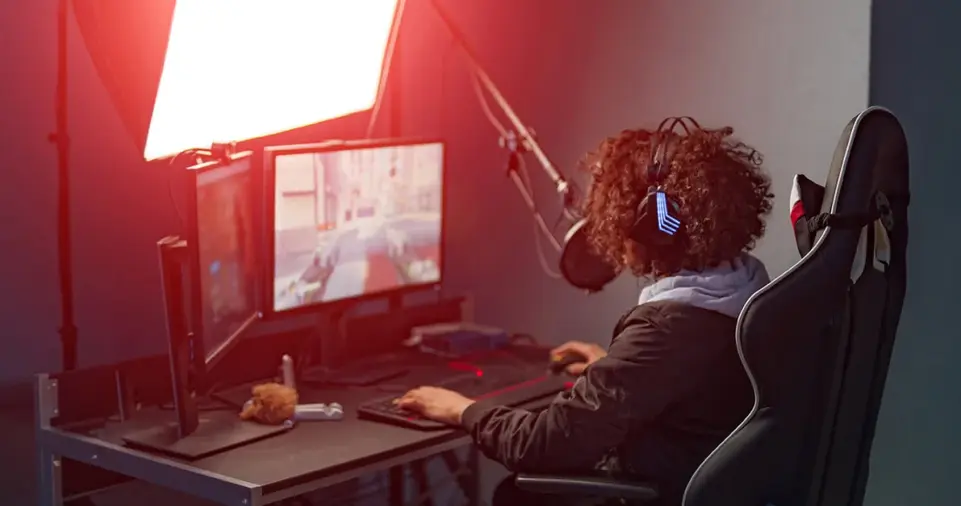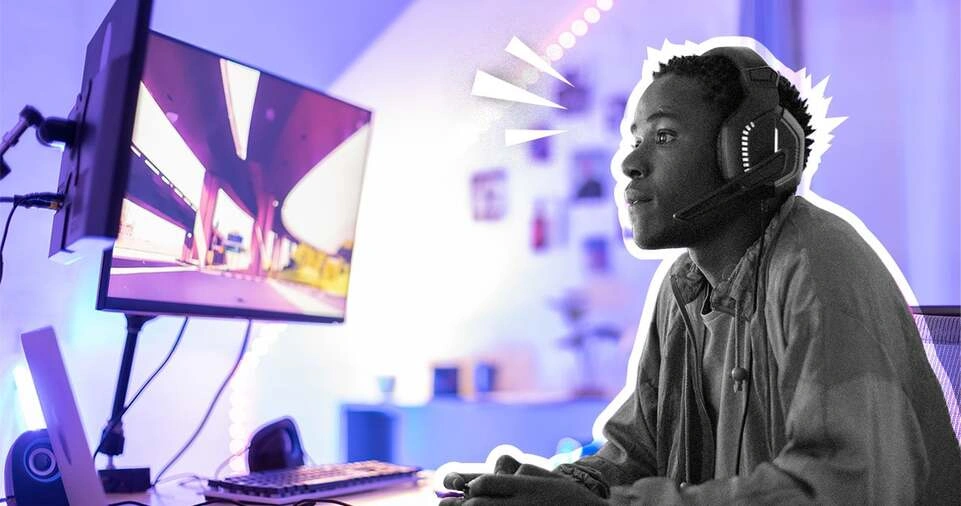Streaming gameplay has become one of the most popular ways to share gaming experiences, build an audience, and even earn money.
Whether you’re an aspiring content creator or simply want to showcase your skills to the world, streaming professionally requires more than just hitting the “Go Live” button.
A high-quality stream demands the right combination of hardware, software, internet settings, and engagement strategies to captivate your audience and ensure smooth gameplay broadcasting.
From choosing the perfect platform to optimizing your stream’s resolution, overlays, and audience engagement, this guide will walk you through the essential steps to start streaming like a pro.
Professional streaming is not just about playing games—it’s about creating an interactive and engaging experience for your viewers.
This means investing in quality equipment, setting up professional overlays, and being an active, engaging host.
In this guide, we will explore every aspect of game streaming, from selecting the right gear and software to monetizing your streams effectively.
Whether you’re a beginner or an experienced gamer looking to improve, this guide will help you build a successful streaming career.
Choosing the Right Streaming Platform
Before diving into the technical aspects of streaming, the first step is selecting the best platform to broadcast your gameplay.
There are several popular platforms to choose from, each with its unique benefits.
Your choice will depend on your target audience, content style, and growth strategy.
Twitch
Twitch is the most dominant game streaming platform, with millions of active users.
It offers features such as subscriptions, bits (donations), and ads that allow streamers to monetize their content.
Twitch’s interactive chat and vast gaming community make it ideal for both casual and competitive gamers.
However, competition is fierce, so standing out requires consistent high-quality content.
YouTube Gaming
YouTube Gaming is perfect for those who want to stream and create evergreen content simultaneously.
Unlike Twitch, where streams disappear after a certain period, YouTube allows you to archive streams, making them available for viewers anytime.
This platform also benefits from YouTube’s search engine, increasing discoverability through SEO.
Facebook Gaming
Facebook Gaming is growing rapidly and offers great potential for streamers who already have a presence on Facebook.
The platform has built-in features for monetization and audience interaction, making it easy for new streamers to gain traction through existing networks.
Other Platforms (Kick, Trovo, etc.)
Newer platforms like Kick and Trovo are emerging with different revenue models, often offering better profit splits for streamers.
If you’re looking for an alternative to Twitch or YouTube, these platforms might be worth exploring.
Choosing the right platform depends on your goals—Twitch is best for dedicated gaming audiences, YouTube is ideal for content longevity, and Facebook Gaming offers easier discoverability for those already active on social media.
Essential Hardware for Professional Game Streaming

To provide high-quality streams, you need the right hardware.
A smooth and visually appealing stream requires a powerful PC, a high-quality camera, a good microphone, and a stable internet connection.
Gaming PC or Console
- PC: A powerful gaming PC is crucial for smooth streaming. Your setup should have at least an Intel i5/i7 or Ryzen 7 processor, 16GB RAM, and a dedicated GPU like NVIDIA RTX 3060 or higher.
- Console: If you’re streaming from a PS5, Xbox Series X, or Switch, you’ll need a capture card (e.g., Elgato HD60S) to connect it to your PC for broadcasting.
High-Quality Microphone
Good audio quality is just as important as video quality.
Viewers will tolerate lower video resolution but won’t stay if your audio is bad.
- Budget-friendly: Blue Yeti, Audio-Technica AT2020
- High-end: Shure SM7B, Rode NT1
Webcam for Face Cam Streaming
Having a face cam increases engagement and makes your stream more personal.
- Best budget option: Logitech C920
- High-end choice: Elgato Facecam
Capture Card (For Console Streamers)
If you’re streaming console games, you need a capture card to record and transmit gameplay to your streaming software. Elgato HD60S is one of the best options.
Stable Internet Connection
Streaming requires a high-speed and stable internet connection.
- Recommended Upload Speed: At least 5-10 Mbps for 1080p @ 60fps.
- Use a Wired Connection: An Ethernet cable ensures a more stable connection compared to Wi-Fi.
ALSO READ: How to Build Your Own Website Without Coding
Setting Up Your Streaming Software
Streaming software is essential for broadcasting your gameplay.
The top choices include:
OBS Studio
- Open-source and free
- Highly customizable but requires manual setup
Streamlabs OBS
- More user-friendly, with built-in overlays and widgets
- Higher CPU usage compared to OBS Studio
XSplit
- Great for professional broadcasting
- Paid software with premium features
Optimizing Stream Settings
- Resolution: 1080p @ 60fps for smooth visuals.
- Bitrate: 4500-6000 Kbps for high-quality streaming.
- Encoder: NVENC (for NVIDIA GPUs) or x264 (CPU-based encoding).
- Audio: Use a bitrate of at least 128kbps for clear sound.
Enhancing Your Stream with Overlays & Alerts

A professional-looking stream needs eye-catching overlays and interactive alerts to engage viewers.
Using Overlays
- Use StreamElements or Streamlabs to create professional overlays.
- Include elements like face cam borders, chat boxes, and social media handles.
Adding Alerts & Widgets
- Alerts for new followers, donations, and subscribers keep your audience engaged.
- Use custom animations and sound effects for a unique touch.
Engaging with Your Audience
Engagement is key to building a loyal community.
Talk While Playing
- Keep your audience entertained by narrating your gameplay and discussing strategies.
Read & Respond to Chat
- Acknowledge viewers and interact with their messages to make them feel involved.
Host Giveaways & Challenges
- Encourage participation with fun challenges and occasional giveaways.
Promoting Your Stream & Growing Your Audience
- Social Media Marketing: Share your stream on Twitter, Instagram, and Discord.
- Create Short Clips: Post highlights on TikTok and YouTube Shorts for more exposure.
- Collaborate with Other Streamers: Partner with others to expand your reach.
Monetizing Your Stream
Enable Platform Monetization
- Twitch Affiliate/Partner
- YouTube Partner Program
Accept Donations & Tips
- Use platforms like Streamlabs, Patreon, or BuyMeACoffee.
Brand Deals & Sponsorships
- Partner with gaming brands to earn through sponsorships.
ALSO READ: How to Pick the Right Accessories to Elevate Your Look
Conclusion
Streaming like a professional requires dedication, high-quality equipment, and audience engagement.
By following these steps—choosing the right platform, optimizing your hardware, using professional streaming software, and promoting your content—you can grow your channel and turn gaming into a full-time career.
Stay consistent, engage with your viewers, and keep improving your setup to become a top-tier game streamer!

